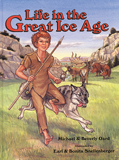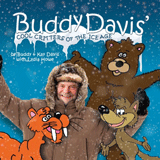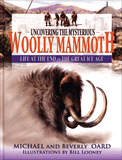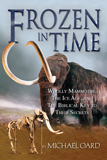Those Wild and Woolly Mammoths
Ice Age Exhibits
on January 2, 2017The extinction of the woolly mammoth, and many other Ice Age mammals, is presented as a mystery in most museums. However, meteorologist Michael Oard offers a plausible explanation for the disappearance of the mammoths, based on his model of the post-Flood Ice Age in his book Frozen in Time. After the Ice Age ended (around 3,500 years ago), temperature differences between summer and winter would have become more extreme in the northern latitudes. The animals would have needed to quickly adjust to much colder winters. Oard explains how this affected the mammoths and other animals that lived in these areas (e.g., Siberia, Alaska, the Yukon, northern parts of the U.S.A.):
They would have required extra food to keep themselves warm. In addition to suffering from the cold, the ice sheets were melting and causing occasional superfloods. They also had to contend with gigantic dust storms, boggy ground from permafrost at the edge of the ice sheets, drought, grass fires, etc. The woolly mammoth and other large herbivores would be especially hard hit, partly because they required so much more food and water. They would be tottering on the edge of extinction within a short time. Carnivores and carrion birds would have their fill for a time, but as their food source died, it would be their turn to go extinct. The end–Ice Age mass extinctions were selective in that mainly large animals went extinct. (Frozen in Time, Master Books, 2004, chapter available at www.answersingenesis.org/answers/books/frozen-in-time/extinction-of-the-woolly-mammoth/.)
Oard suggests that the main cause of Ice-Age-animal extinction in the Northern Hemisphere was giant dust storms that resulted from a drying climate and changing temperatures. He bases his ideas on the fact that most of the mammoths and other animals are found entombed in wind-blown silt (Loess).
Loess is rather common south of and within the periphery of the former ice sheets in the Northern Hemisphere. It forms a thick blanket in parts of central China. This was probably desert loess that blew in from the west. … large parts of Siberia are also covered with a layer of loess. In North America, we find large areas of stabilized sand dunes; for instance, extensive sand dunes cover areas of the Great Plains. The Nebraska sand hills blanket a large portion of western Nebraska and are up to 400 feet deep! Similar dunes are found north of the Cypress Hills in southeast Alberta and southwest Saskatchewan. Dunes are common in northern Europe and northwest Asia. Today, all of these dunes are mostly stabilized by vegetation. The dunes attest to the severity of the drought and dust storms during deglaciation. (Frozen in Time, Master Books, 2004, chapter available at www. answersingenesis.org/answers/books/frozen-in-time/extinction-of-the-woolly-mammoth/.)
Related Media
Ice Age
Related Downloads
Lesson 29: Was There an Ice Age?
PDF DownloadMammoths—what happened to them?
Audio DownloadLiving mammoths—alive in Nepal?
Audio DownloadMembers of the Elephant Kind
PDF DownloadMuseum Guide
Are you exasperated by all the hype about "millions of years" in secular museums? The Museum Guide will help!
Browse Kids BookRecommended Resources
- © 2024 Answers in Genesis
- Privacy Policy
- Contact
- About





